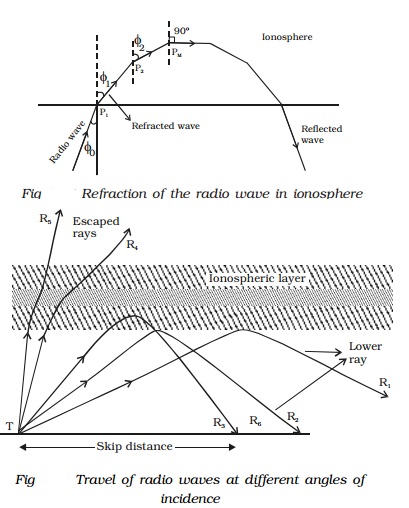
Propagation of electromagnetic waves
Ground (surface) wave propagation:
Ground or surface waves are the radio waves which travel along the surface of the earth as shown in Fig 10.1. Ground wave propagation takes place when the transmitting and receiving antennas are close to the ground. Ground wave propagation is of prime importance only for medium and long wave signals. All medium wave signals received during the daytime use surface wave propagation.

Space wave propagation:
Radio waves propagated through the troposphere of the Earth are known as space waves. The troposphere is the portion of the Earth’s atmosphere which extends up to 15 km from the surface of the Earth. Space wave usually consists of two components as shown in Fig
- A component which travels straight from the transmitter to the receiver.
- A component which reaches the receiver after reflection from the surface of the Earth.
Space wave propagation is particularly suitable for the waves having frequency above 30 MHz

Skywave (or) ionosphere propagation:
The ionosphere is the upper portion of the atmosphere, which absorbs large quantities of radiant energy like ultraviolet rays, cosmic rays etc., from the sun, becoming heated and ionized. This ionized region contains free electrons, positive and negative ions.
Radio waves in the shortwave band radiated from an antenna at large angle with the ground, travel through the atmosphere and encounter the ionized region in the upper atmosphere. Under favourable circumstances, the radio waves get bent downwards due to refraction from the different parts of the ionized region and again reach the earth at a far distant point. Such a radio wave is called the sky wave and such a propagation of radio wave is known as skywave propagation or ionosphere propagation. Long distance radio communication is thus possible through the sky wave propagation.


